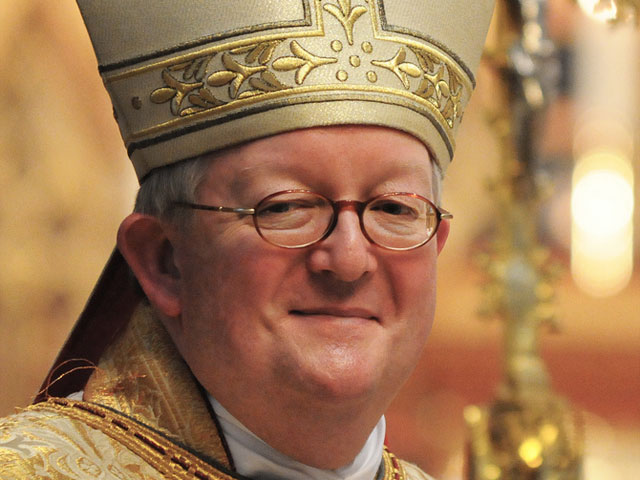So it’s a Friday in Lent (only in Western churches, at this point), so what did you have for lunch?
As a convert to Eastern Orthodoxy, I have always been interested in how other ancient churches — think Rome and, to some degree, Canterbury — handle the great fasting seasons. When you add them all up, including our normal fasts on Wednesdays and Fridays, practicing Orthodox Christians live as vegans or, at the very least, vegetarians more than half the year. The Catholic Church, in recent decades, has been having a lively debate about the relevance of fish on Fridays.
My point isn’t theological. Actually, I think there is an interesting story here, one that rarely shows up in the mainstream press (I mean, beyond your basic Lenten fast food stories, such as this item from Nation’s Restaurant News). Those stories tend to lead to this kind of reporting:
Every year restaurant chains focus their menu development and marketing to make sure they are not giving up traffic and sales between Ash Wednesday and Easter Sunday, a 40-day period when Christians observing Lent abstain from certain vices or habits.
For most foodservice brands that means stepping up seafood and fish offerings for the season when Christians typically stop eating meat on Fridays.
This year several chains, including McDonald’s, Carl’s Jr. and Wendy’s, are finding new ways to market fish items typically promoted during Lent, which began on Feb. 13. Some chains are even thinking beyond the typical fried fish sandwich.
Well, it’s understandable that this story focuses on the dominant liturgical Christian tradition in our culture, which would be Catholicism. I get that.
However, this brings me to my main point: What is Lent, these days, even for practicing Catholics? What are the agreed-upon practices for keeping a holy Lent?
In particular, I’d like to ask for input from GetReligion readers, especially this site’s many Catholic readers: Does anyone know where this whole “give up one thing for Lent” idea came from? I dug into this five years ago for a Scripps Howard column and I couldn’t find anyone who knew the facts on where this universally discussed sort-of tradition came from.
It didn’t come from from Catholicism. We can’t blame the Lutherans or Anglicans. It’s sure as heck not from Eastern Orthodoxy.
This is important for several reasons, not the least of which is that it’s a great case study for the state of Catholic spiritual disciplines and practices post-Vatican II. Here’s an even more important question: How many American Catholics are going to Confession before receiving Communion at Easter?
But back to the “one thing for Lent” thing. Here is what I found several years ago, talking to one popular Catholic apologist:
When most people think of Lent, this “giving up one thing” concept is the one thing that comes to mind, even for many of America’s 62 million Catholics. Now, many Protestants have adopted the same practice. This is, however, a modern innovation that has little or nothing to do with ancient Lenten traditions, in the West or the East.
“There are Catholics who don’t practice their faith and they may not be up on what it really means to observe Lent,” said Jimmy Akin, director of apologetics and evangelization for the Catholic Answers website. “But active Catholics know there is supposed to be real fasting and abstinence involved in Lent. The question is whether they want to do more, to add something extra. That is what the ‘one thing’ was supposed to be about.” …
It’s impossible to know how or when the idea of “giving up one thing” came to dominate the Lenten season, he said. The roots of the tradition may date back to the sixth century and the influential monastic Rule of St. Benedict, which added a wrinkle to the usual Lenten guidelines.
“During these days, therefore, let us add something to the usual amount of our service, special prayers, abstinence from food and drink, that each one offer to God … something above his prescribed measure,” states the Rule. “Namely, let him withdraw from his body somewhat of food, drink, sleep, speech, merriment, and with the gladness of spiritual desire await holy Easter.”
The key, Akin explained, is that this was supposed to be an extra sacrifice.
In other words, the “one thing” was not a replacement for the Lenten disciplines and it was not the central or sole Lenten discipline. It was supposed to be an EXTRA sacrifice that was added to traditions that have lasted for centuries.
How did the “one thing” turn into the most popular image of Lent?
That’s my question. Has anyone seen coverage of this phenomenon? Have you seen stories that simply assume the “one thing” concept what goes on in Lent — period? Please share some URLs.
And speaking of URLs, a former student of mine who currently works at Christianity Today Online served up an interesting report the other day that mixes Lent, Twitter and the “one thing” thing. So what do people say they plan to give up, as part of this mysterious, out of nowhere Lenten sort-of tradition? Here’s the first half of this rather strange, depressing Top 100 list.
1. Twitter
2. Chocolate
3. Swearing
4. Alcohol
5. Soda
6. Facebook
7. Fast food
8. Sex
9. Sweets
10. Meat
11. Lent
12. School
13. Junk food
14. Chips
15. Coffee
16. Candy
17. Bread
18. You
19. Smoking
20. Giving up things
21. Homework
22. Food
23. Social networking
24. Religion
25. Marijuana
26. Beer
27. Work
28. Stuff
29. McDonald’s
30. Virginity
31. Cookies
32. Masturbation
33. Ice cream
34. Shopping
35. Fried food
36. Boys
37. Sobriety
38. Coke
39. Catholicism
40. Cheese
41. Nothing
42. Carbs
43. Red meat
44. Procrastination
45. Desserts
46. Pizza
47. Pancakes
48. Sugar
49. Rice
50. Breathing
The hot new thing to give up? That would be, “Being pope.”
And No. 100? That would be, “Being nice,” which rather misses the point of the whole Lent thing.











